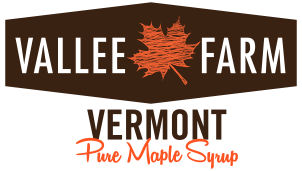How It's Made
The "Maple Sugaring" Process:
Warm Days...Cold Nights....
There are three basic elements to the maple sugaring process when it comes to producing Vermont pure maple syrup: tapping, collecting (or gathering) and boiling. Each step in the process requires thorough preparation and effort to ensure everything runs smoothly.
Before this process can take place, preseason preparations are completed. Around the first of the year, we begin prepping the woods for tapping. This includes fixing any animal or weather damage to the trees and sap lines, as well as making necessary repairs to equipment.
After a strong month of preparation, all eyes turn to the weather. The fluctuation in temperature and outside conditions are main factors in determining when we actually begin tapping the trees (and also when the sap will flow). For example, if the temperature is below ten degrees Fahrenheit, we just can’t tap, as it will cause damage to the trees. Snow levels and warm spells also factor into deciding when to head into the woods.
Once the weather permits, we begin the multi week process of tapping the trees and installing the tubing/sap lines, using environmentally friendly quarter inch taps to prevent harm to the maples. Then it becomes a waiting game for the sap to run (and 40 years of weather journals do not necessarily help to predict anything!).
With the sap finally flowing on warm days after cold nights, it's time to gather. The sap from the trees is gathered in two ways, through pipelines and through taps and spouts into buckets. Once the sap has been collected and transported to the sugarhouse, the boiling process can begin.
Using an evaporator inside of the sugarhouse, the sap is boiled down at very high temperatures (over 212 and up to 219 degrees Fahrenheit) to slowly turn into maple syrup. It takes forty gallons of sap to make one gallon of maple syrup! There is nothing added and no preservatives, just Vermont pure maple syrup- from our farm to your table.
More Details on the process...
1. Preseason
About a month before the season begins is when repairs in the woods happen. Damage throughout the woods can take place in the offseason and for a variety of reasons. Squirrel and moose damage to trees is common, but wind and storm conditions also factor in. Walking through the woods and repairing these damages to ensure the woods are cleaned up and the trees are healthy is a must. This is when we also clean the sugarhouse and sanitizes all of the equipment, according to Vermont Agency of Agriculture inspection and certification standards.
2. Tapping
After thoroughly monitoring the weather for the perfect time to begin tapping, the multi week process can finally get started. Tapping the thousands of maple trees in our sugar woods is a slow, methodical process, with both buckets and pipelines used to collect sap. The flow of the sap determines when the gathering process begins. (Taps are non-toxic food grade plastic).
3. Gathering
With the sap flowing, it's time to gather. The sugaring season is very short, with the window of when sap actually flows even shorter. Warm days and cold nights are a sugarmaker’s ideal weather conditions. It is very important to gather sap in an efficient manner during this period, as the length of the opportunity can vary from season to season.

 Bucket
Bucket
